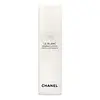What's inside
What's inside
 Key Ingredients
Key Ingredients

 Benefits
Benefits

 Concerns
Concerns

 Ingredients Side-by-side
Ingredients Side-by-side

Water
Skin ConditioningEthylhexyl Palmitate
EmollientHydrogenated Polyisobutene
EmollientGlycerin
HumectantGlyceryl Stearate
EmollientCeteareth-12
EmulsifyingGlycyrrhiza Glabra Root Extract
BleachingPrunus Mume Flower Extract
Skin ConditioningPhenoxyethanol
PreservativeCeteareth-20
CleansingTocopheryl Acetate
AntioxidantButylene Glycol
HumectantCetearyl Alcohol
EmollientCetyl Palmitate
EmollientAscorbyl Tetraisopalmitate
AntioxidantParfum
MaskingSqualane
EmollientChlorhexidine Digluconate
AntimicrobialPhytic Acid
Sodium Hydroxide
BufferingSodium Citrate
BufferingSodium Benzoate
MaskingTocopherol
AntioxidantWater, Ethylhexyl Palmitate, Hydrogenated Polyisobutene, Glycerin, Glyceryl Stearate, Ceteareth-12, Glycyrrhiza Glabra Root Extract, Prunus Mume Flower Extract, Phenoxyethanol, Ceteareth-20, Tocopheryl Acetate, Butylene Glycol, Cetearyl Alcohol, Cetyl Palmitate, Ascorbyl Tetraisopalmitate, Parfum, Squalane, Chlorhexidine Digluconate, Phytic Acid, Sodium Hydroxide, Sodium Citrate, Sodium Benzoate, Tocopherol
Water
Skin ConditioningCyclopentasiloxane
EmollientCyclohexasiloxane
EmollientTitanium Dioxide
Cosmetic ColorantDipropylene Glycol
HumectantZinc Oxide
Cosmetic ColorantButylene Glycol
HumectantCetyl PEG/PPG-10/1 Dimethicone
EmulsifyingButylene Glycol Dicaprylate/Dicaprate
EmollientNiacinamide
SmoothingSodium Chloride
MaskingPEG-10 Methyl Ether Dimethicone
EmulsifyingMica
Cosmetic ColorantGossypium Herbaceum Extract
Skin ConditioningAnthemis Nobilis Flower Water
MaskingVolcanic Ash
AbrasiveChenopodium Quinoa Seed Extract
Skin ConditioningRosa Damascena Flower Water
MaskingDimethicone
EmollientDisteardimonium Hectorite
StabilisingAluminum Hydroxide
EmollientStearic Acid
CleansingDimethicone/Vinyl Dimethicone Crosspolymer
Skin ConditioningTriethyl Citrate
MaskingHydrogen Dimethicone
Adenosine
Skin ConditioningHydrogenated Lecithin
EmulsifyingDisodium EDTA
Phenoxyethanol
PreservativeCaprylyl Glycol
EmollientEthylhexylglycerin
Skin Conditioning1,2-Hexanediol
Skin ConditioningParfum
MaskingCitric Acid
BufferingSodium Benzoate
MaskingPotassium Sorbate
PreservativeTriethoxycaprylylsilane
Ultramarines
Water, Cyclopentasiloxane, Cyclohexasiloxane, Titanium Dioxide, Dipropylene Glycol, Zinc Oxide, Butylene Glycol, Cetyl PEG/PPG-10/1 Dimethicone, Butylene Glycol Dicaprylate/Dicaprate, Niacinamide, Sodium Chloride, PEG-10 Methyl Ether Dimethicone, Mica, Gossypium Herbaceum Extract, Anthemis Nobilis Flower Water, Volcanic Ash, Chenopodium Quinoa Seed Extract, Rosa Damascena Flower Water, Dimethicone, Disteardimonium Hectorite, Aluminum Hydroxide, Stearic Acid, Dimethicone/Vinyl Dimethicone Crosspolymer, Triethyl Citrate, Hydrogen Dimethicone, Adenosine, Hydrogenated Lecithin, Disodium EDTA, Phenoxyethanol, Caprylyl Glycol, Ethylhexylglycerin, 1,2-Hexanediol, Parfum, Citric Acid, Sodium Benzoate, Potassium Sorbate, Triethoxycaprylylsilane, Ultramarines
Ingredients Explained
These ingredients are found in both products.
Ingredients higher up in an ingredient list are typically present in a larger amount.
Butylene Glycol (or BG) is used within cosmetic products for a few different reasons:
Overall, Butylene Glycol is a safe and well-rounded ingredient that works well with other ingredients.
Though this ingredient works well with most skin types, some people with sensitive skin may experience a reaction such as allergic rashes, closed comedones, or itchiness.
Learn more about Butylene GlycolParfum is a catch-all term for an ingredient or more that is used to give a scent to products.
Also called "fragrance", this ingredient can be a blend of hundreds of chemicals or plant oils. This means every product with "fragrance" or "parfum" in the ingredients list is a different mixture.
For instance, Habanolide is a proprietary trade name for a specific aroma chemical. When used as a fragrance ingredient in cosmetics, most aroma chemicals fall under the broad labeling category of “FRAGRANCE” or “PARFUM” according to EU and US regulations.
The term 'parfum' or 'fragrance' is not regulated in many countries. In many cases, it is up to the brand to define this term.
For instance, many brands choose to label themselves as "fragrance-free" because they are not using synthetic fragrances. However, their products may still contain ingredients such as essential oils that are considered a fragrance by INCI standards.
One example is Calendula flower extract. Calendula is an essential oil that still imparts a scent or 'fragrance'.
Depending on the blend, the ingredients in the mixture can cause allergies and sensitivities on the skin. Some ingredients that are known EU allergens include linalool and citronellol.
Parfum can also be used to mask or cover an unpleasant scent.
The bottom line is: not all fragrances/parfum/ingredients are created equally. If you are worried about fragrances, we recommend taking a closer look at an ingredient. And of course, we always recommend speaking with a professional.
Learn more about ParfumPhenoxyethanol is a preservative that has germicide, antimicrobial, and aromatic properties. Studies show that phenoxyethanol can prevent microbial growth. By itself, it has a scent that is similar to that of a rose.
It's often used in formulations along with Caprylyl Glycol to preserve the shelf life of products.
Sodium Benzoate is a preservative. It's used in both cosmetic and food products to inhibit the growth of mold and bacteria. It is typically produced synthetically.
Both the US FDA and EU Health Committee have approved the use of sodium benzoate. In the US, levels of 0.1% (of the total product) are allowed.
Sodium benzoate works as a preservative by inhibiting the growth of bacteria inside of cells. It prevents the cell from fermenting a type of sugar using an enzyme called phosphofructokinase.
It is the salt of benzoic acid. Foods containing sodium benzoate include soda, salad dressings, condiments, fruit juices, wines, and snack foods.
Studies for using ascorbic acid and sodium benzoate in cosmetics are lacking, especially in skincare routines with multiple steps.
We always recommend speaking with a professional, such as a dermatologist, if you have any concerns.
Learn more about Sodium BenzoateWater. It's the most common cosmetic ingredient of all. You'll usually see it at the top of ingredient lists, meaning that it makes up the largest part of the product.
So why is it so popular? Water most often acts as a solvent - this means that it helps dissolve other ingredients into the formulation.
You'll also recognize water as that liquid we all need to stay alive. If you see this, drink a glass of water. Stay hydrated!
Learn more about Water